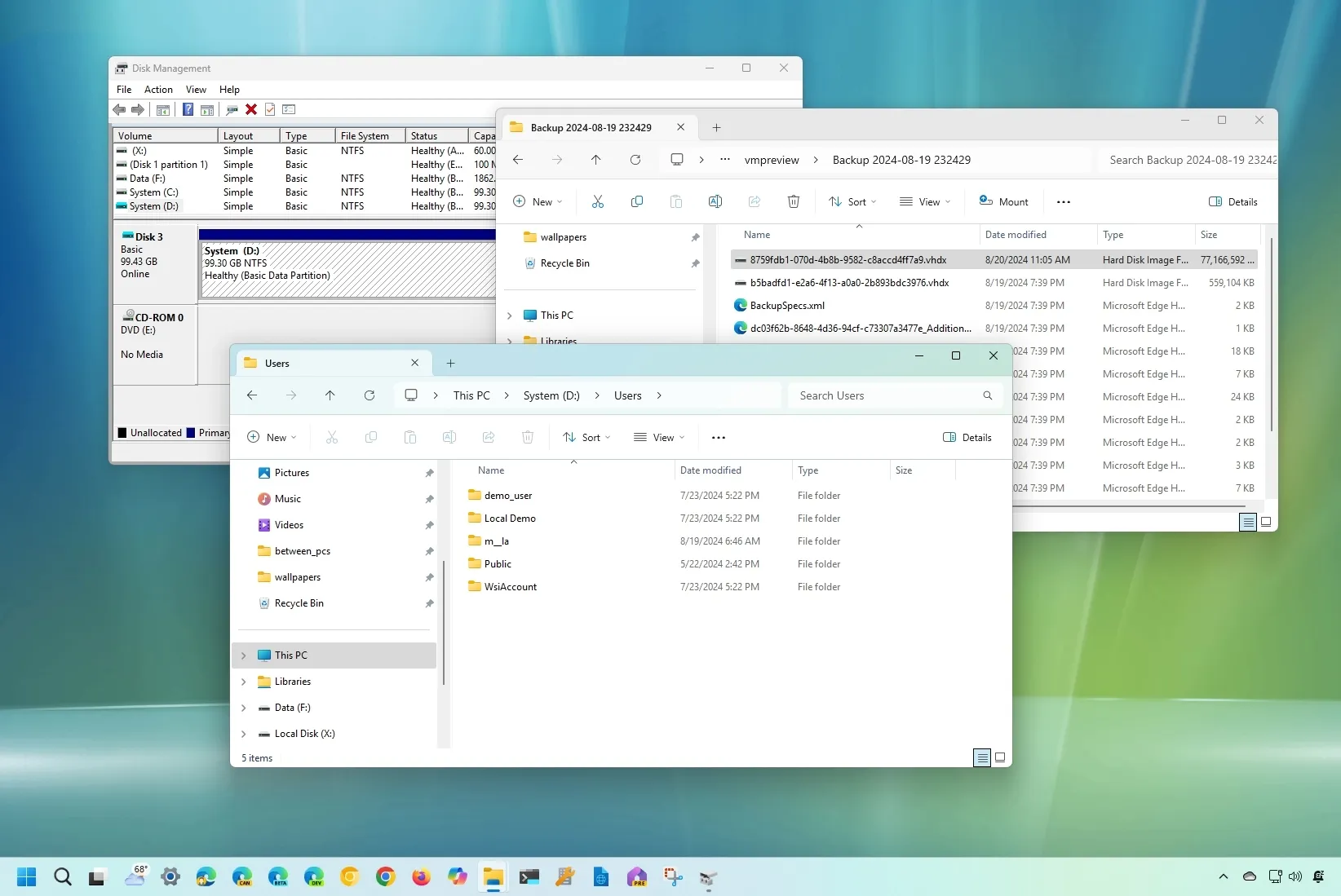How to extract files from System Image Backup on Windows

- To recover files from System Image Backup on Windows 11 (or 10), open Disk Management, attach the System Image Backup VHDX, and assign a drive letter. Then, on File Explorer, open the drive, copy the files you want to restore, and then detach the VHDX.
On Windows 11, 10, and even other versions, you can restore individual files from a System Image Backup without having to restore a full backup on a computer, and in this guide, I will show you how to complete the process.
If you have created a full backup using the legacy “System Image Backup,” it’s known that you can only use this tool to restore the entire computer, not individual files. However, the tool uses a combination of XML and VHDX files to create a copy of the setup and your files. As a result, it’s possible to attach the VHDX (Virtual Hard Disk v2) file to Windows to extract individual files without restoring the entire computer.
In this guide, I will explain the steps to mount the image backup to extract files on Windows 11, but these instructions will also work on Windows 10.
Important: Although it shouldn’t be required, I would recommend creating a copy of the backup instead of working directly with the original image to prevent accidental changes that may break the backup. After you are done restoring the files, you can always delete the copy.
Recover individual files from image backup on Windows
To extract and restore files from a System Image Backup on Windows 11 (or 10), use these steps:
-
Open Start.
-
Search for diskmgmt.msc and click the top result to open the Disk Management tool.
-
Click on Action and choose the Attach VHD option.
-
Click the Browse button.

-
Open the WindowsImageBackup folder.
Quick note: You need to connect the drive or load the shared folder where the backup is stored to access the files.
-
Open the folder with the computer name.
-
Open the “Backup xxxx-xx-xx xxxxxx” folder.
-
Select the largest VHDX file.

-
Click the Open button.
-
Click the OK button.
-
Right-click the VHDX you just mounted and choose the “Change Drive Letter and Paths” option.

-
Click the Add button.
-
Select the “Assign the following drive letter” option.
-
Choose a drive letter for the VHDX.

-
Click the OK button.
-
Open File Explorer.
-
Click on This PC from the left pane.
-
Right-click the drive with the backup files and choose the Open option.
After you complete the steps, you will have access to the files stored in the backup. If you’re looking for files stored in the profile folders, you can find them inside the “Users” folder.

Once you finish restoring the files, in the Disk Management tool, right-click the mounted drive and choose the “Change Drive Letter and Paths” option, the “Remove” button, the “Yes” button, and the “OK” button.

Finally, right-click the drive from the left pane and choose the “Detach VHD” option.

Although the System Image Backup is a suitable option to back up your computer, if you want to back up and restore files individually, you should consider using File History or another type of file backup, such as OneDrive or Windows Backup.
Why You Can Trust Pureinfotech
The author combines expert insights with user-centric guidance, rigorously researching and testing to ensure you receive trustworthy, easy-to-follow tech guides. Review the publishing process.
Source link






